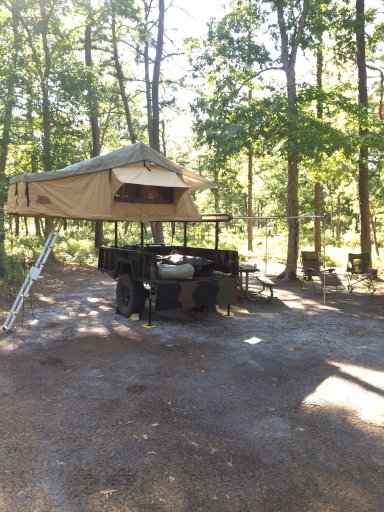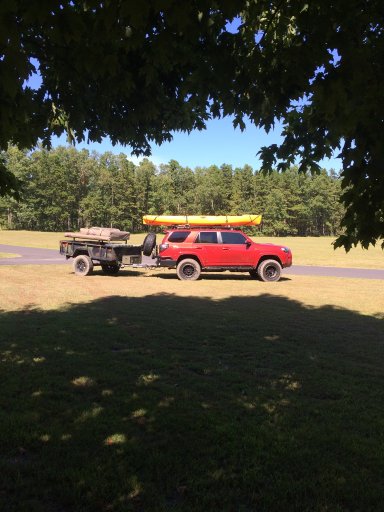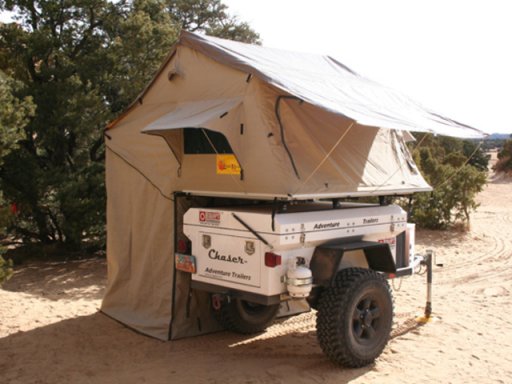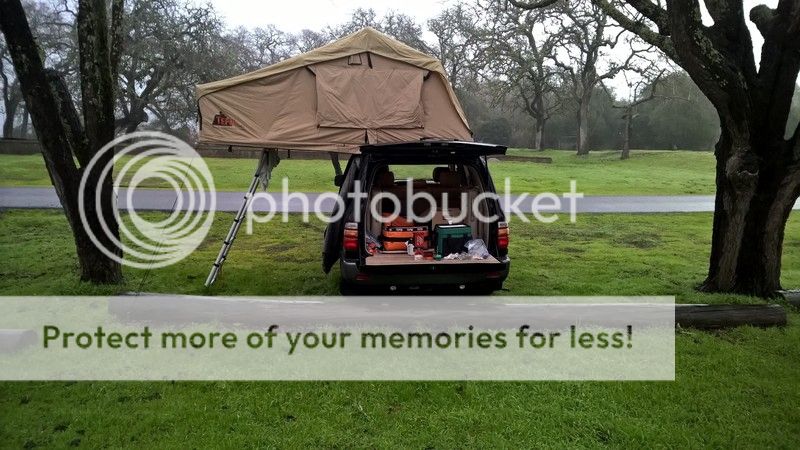Hi folks, Great question on the RTT and there are definitely some tradeoffs. I;ll start with personal experience then share a post that I found very helpful when considering.
I have wanted one for a while and ended up picking one up as a project. My initial reaction upon loading it on the Toyota Series 100 is that there is noticeable wind noise and drag. As it turns out, on a trip to/fr SF to Sonoma recently, the mileage was about the same as without the RTT (still bad ;-) ). The biggest problem I have with the RTT is that is not convenient for my dog to get up/down. So, if he comes with me and the RTT, he'll have to sleep in the truck or if I set up the annex, down there. There are definite pros and cons, pros being super easy to set-up, take down, most folks I've talked to have a fitted sheet and a duvet that they leave in the tent so no sleeping bags etc... (PRO TIP: Tie a length of paracord (about 18" or so) to the zipper of the travel cover. This way if it's hard to reach across the roof, flick the paracord to the other side, grab it and give it a gentle pull... super easy!) Cons are that it's top heavy, raises truck's CG and not good for expedition where you are going to have a base camp and wheel from there... The guys who have mounted them to trailers seem to have the best of both worlds...
Here is a review that I found very helpful. It comes from one of the members of the NorCal Land Rover Club. There are more than a few RTT's on member's trucks and NCLR shares a great relationship with the folks at Tepui. Great people, great service, very innovative designs although the construction is (probably) in the same building in China as CVT, ARB, ETC...
Hope this helps...
I'll preface this post with the fact that I do not own a RTT, but it's been contemplated for many years. I'm not nay saying your idea at all as I'd love to find a way to make one work for me, but these are questions that have been on my mind.
First issue to resolve is an easy(ish) way of mounting it to the roof rack.
From the video it looks like there is a tarp or blanket protecting the upper tailgate glass. His window looks a lot cheaper to replace than yours should something go wrong. For step 2, he's still standing on the ground. I guess with the LR3/4 you can put it in access mode to lower it as much as possible, but can you comfortably reach the top of the rack holding ~100 lbs. of metal and canvas. My first thought was what if it started to list to one side and have it topple to the ground? Depending on the dimensions of the RTT you're looking at and the dimensions of your rack, you may have to mount it ABOVE the rack. The Safety Devices rack is a tad under 4' wide and the Ezi-Awn I was looking at was a tad over 4' wide. That puts the RTT at least a few more inches higher than it could be.
Which leads to the next subject, CoG. If you're running fire trails there's not much to worry about when it comes to off camber situations. However trails are always changing, and there might be a fallen tree or rock that has made its way onto the the trail the might necessitate getting a little tippy. Take into account the fact that for a lot of trips, you spend most of the time on the highway. A sudden emergency maneuver will have the truck acting differently than you're used to. If you get one do some swerve testing in an open parking lot. To a lesser extent, wind gusts from the side will have you paying a little more attention to the road as well.
When it comes to deploying the RTT, as you mentioned you have a few options to which way it folds out. Over the rear of the truck is nice because it gives you an small roof over the tailgate. To the side of the truck is pretty popular too. I've seen some rack setups that utilize a hinge (usually requires cutting and modding the rack) so a section of the rack wall can fold down. This only applies if you're able to mount the RTT directly to the floor of your rack though. Going this route, you also have to make sure the hinge locks well (especially if you use ratchet straps when not using the RTT), and doesn't rattle while driving. My understanding is that given the height of these trucks sometimes an extension is needed for the ladder to reach the ground. You could also mount the RTT to the front of the rack. This is advantageous for a few reasons. It can allow the tent to unfold over the hood of the truck letting the ladder support the tent from the front bumper instead of uneven ground. Of course you need a bumper with a bull bar for the ladder to hook onto. Mounting the RTT so it deploys over the front or rear can save room if camping is tight. At DV last year, people with RTT's had to organize who's tent deployed in which direction (driver side or passenger) and park accordingly. It's less of an issue going front or back. The same applies if you're on a single track trail and there's no room to deploy sideways, though that's a pretty rare situation.
Leave time for bio breaks. Do you get up in the middle of the night or first thing in the morning? If you (or your wife) really have to go. are you prepared to make your way down a 6' ladder when it's, dark/cold/wet outside? Even a slip from one of the last rungs can spell disaster for a trip. Jonathan (The Chef) had this happen to him at the Annual a few years ago. He was there for all of 10 minutes setting up his RTT and slipped and sprained his ankle. That's not a big deal in Hollister, but out in the middle of no where it can take on a whole new meaning. Also, you'll want to get a good look at the interior of the RTT. Some have guy lines that don't offer 100% open space inside of them.
RTT's typically come with some sort of foam pad. While thicker than an air mattress it's still not the bed at home. Find an RTT you're interested in and check on the type and thickness of their foam. You can try to get a similar test pad for your wife to sleep on, first in a ground tent, or just slip a piece of plywood under it to better simulate the RTT floor. If that's not any better for her, you'll have saved a pretty penny by foregoing the RTT. Extra bedding can help out which may or may not fit in the RTT when folded.
If you have to get a longer ladder, or an extension, you'll need somewhere to store it. Sometimes it can fit with the RTT under the cover, other times it goes in the truck. The ladder is what supports the folded out section, so yes, the ladder is needed. The covers seem to hold up pretty well (especially if stored out of the sun), but it is a wear item that you'll want to keep an eye on. The last thing you want is a torn cover on a rainy trip.
Once home, storage of the RTT when not needed can be tricky unless you have dedicated room set aside for it. Brian (HMBRover) has a ceiling mounted winch in his garage that lifts the RTT straight off the roof rack.
The trails you're hitting will also decide how much usage the RTT will actually see. Obviously you're not hitting the Rubicon, where a RTT would be silly, but other things to consider would be; low hanging branches in a forest area, or overhangs from rocky walls.
The allure is always there for me, but then the practicality of it all just dampens the mood. Considering the cost of the OzTent vs. a decent RTT, it's now starting to slowly replace the RTT thought. I'm sure there are a few points that I haven't covered but these are the main ones that have popped up for me over the years of thinking this over or seeing them in action.
~BCorns, NCLR
Then I found THIS video on how to install the tent solo...hilarious!
So, here is some food for thought, I hope you find it as useful as I did.
Tom
Sonoma, January 2016










